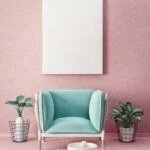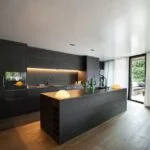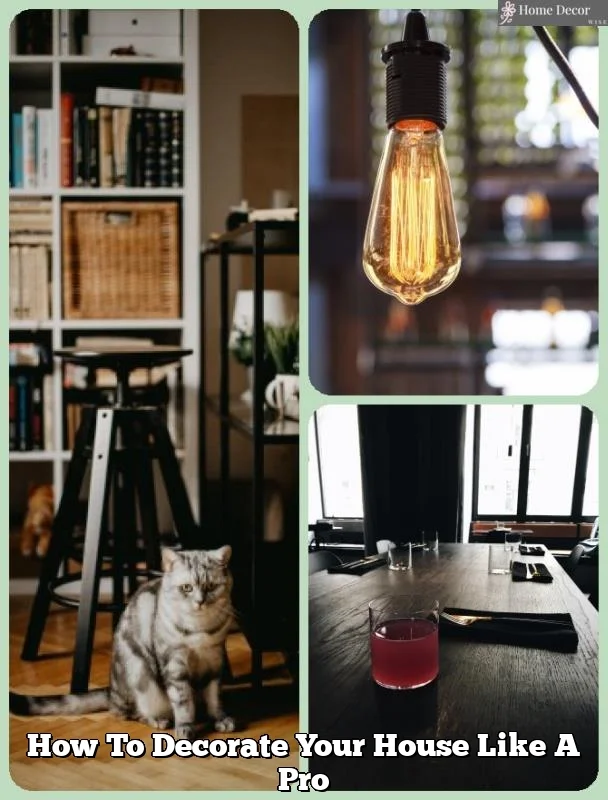Are you looking to transform your living space into a comfortable and welcoming oasis? In this article, we will explore how we can decorate our homes to create a space that not only reflects our personal style but also enhances our overall well-being.
From choosing the right color scheme to incorporating textures and patterns, maximizing natural light, personalizing with art and accessories, and creating a functional and organized home, we have you covered. Let’s delve into the significance of home decor in shaping the mood, productivity, and overall atmosphere of our living spaces.
The importance of home decor goes beyond just aesthetics; it plays a crucial role in setting the tone for our daily lives. A thoughtfully designed space has the power to uplift our spirits, improve productivity, and promote relaxation. Throughout this article, we will discuss different aspects of home decor that contribute to creating an environment that is not only visually appealing but also conducive to a fulfilling lifestyle.
From selecting the right color palette that complements your home’s aesthetic to incorporating personal touches with art and accessories, every detail matters in crafting a space that feels like home. We will delve into practical tips for maximizing natural light, bringing the outdoors in with indoor plants, and adding finishing touches to tie everything together for a polished and cohesive look.
So join us as we explore how we can elevate our living spaces through intentional and purposeful home decor choices.
Choosing the Right Color Scheme for Your Home
When it comes to home decor, choosing the right color scheme is essential in creating a cohesive and visually appealing space. The colors we surround ourselves with can have a significant impact on our mood and overall well-being, making it crucial to select a palette that complements the aesthetic of your home while also promoting a positive atmosphere. Here are some tips for selecting the perfect color scheme for your home:
- Consider the overall vibe: Before making any decisions, think about the mood you want to create in each room. For example, calming and soothing colors like blues and greens are ideal for bedrooms, while vibrant and energetic shades like yellows and oranges work well in common areas.
- Explore color psychology: Take into account the psychology of colors and their influence on mood and ambiance. Warm tones like reds and oranges can evoke feelings of warmth and comfort, while cool tones like blues and purples can promote relaxation.
- Test before committing: It’s always a good idea to test out different paint or fabric swatches in your space before making a final decision. Lighting can greatly affect how a color looks in a room, so make sure to see how it looks at different times of day.
By carefully selecting the right color scheme for your home, you can create an environment that reflects your personal style while also promoting a positive and welcoming atmosphere. Whether you opt for bold statement hues or soft neutral tones, the colors you choose will play a crucial role in setting the tone for your living space.
Incorporating Textures and Patterns Into Your Home Decor
When it comes to creating an inviting and visually appealing home, the use of textures and patterns plays a crucial role in adding depth and interest to your space. By incorporating a variety of textures and patterns, you can transform a plain room into a dynamic and multi-dimensional environment. Understanding how to effectively use textures and patterns will elevate the aesthetic appeal of your home decor.
One way to incorporate textures is through the use of textiles such as throw pillows, area rugs, and curtains. Opt for fabrics with different tactile qualities such as velvet, linen, or wool to create contrast and visual interest. Additionally, consider mixing different patterns such as stripes, florals, or geometric prints to add energy and personality to your space. Layering various textiles and patterns will create a cozy and inviting atmosphere in any room.
Another effective way to introduce texture into your home is through the use of furniture and decor accents. Incorporate materials like wood, metal, glass, or ceramic to add visual contrast and warmth to your living space. Whether it’s through a rough-hewn wooden coffee table or a sleek metallic lamp, these elements can greatly enhance the overall ambiance of your home.
Furthermore, don’t forget about the walls when considering textures for your home decor. Wallpaper with textured finishes such as grasscloth or embossed designs can add an extra dimension to your walls. Consider utilizing wall art or mirrors with intricate frames that add visual interest through their unique textures. These small details can have a big impact on the overall look and feel of a room.
| Tips for Incorporating Textures | Examples of Textures |
|---|---|
| Mix different fabrics in throw pillows | Variety of tactile qualities – velvet, linen, wool |
| Layer textiles with different patterns | Stripes, florals, geometric prints |
| Incorporate furniture with different materials | Wood, metal, glass |
| Add textured wallpaper or wall art | Grasscloth finish or intricate frames |
Maximizing Natural Light in Your Home
When it comes to home decor, one of the key elements to consider is how natural light can enhance the overall ambiance of your living space. Maximizing natural light not only creates an airy and bright atmosphere, but it also has a significant impact on mood and well-being. Here are some strategies for maximizing natural light in your home:
- Choosing the right window treatments: Opt for sheer curtains or blinds that allow natural light to filter through while still providing privacy. Avoid heavy drapes that block out sunlight and make the space feel dark and closed off.
- Utilizing mirrors to reflect light: Place mirrors strategically across from windows to amplify the amount of natural light in a room. Mirrors not only create the illusion of more space, but they also bounce light around the room, making it feel more open and bright.
- Using lighter colors for walls and furnishings: Light-colored walls, furniture, and decor accents can help reflect natural light, making a room appear brighter and more spacious. Consider using shades of white, cream, or pastel hues to maximize the effect of natural light.
Incorporating these strategies into your home decor can have a transformative effect on how your living space feels. By maximizing natural light, you can create a welcoming and energizing environment that positively impacts your mood and overall well-being.
Personalizing Your Space With Art and Accessories
Adding art and accessories to your home decor is a great way to inject your personality and style into your space. Whether it’s through curated art pieces, unique accessories, or family heirlooms, these elements can showcase your individuality and make a house truly feel like a home.
The Impact of Art and Accessories
Art has the power to evoke emotions, inspire creativity, and serve as a focal point in any room. Whether you prefer vibrant paintings, minimalist photography, or eclectic sculptures, the right art can completely transform the ambiance of a space. Meanwhile, accessories such as decorative vases, throw pillows, or statement rugs can add layers of visual interest and tie together the design elements in a room.
When selecting art and accessories for your home, it’s important to consider pieces that resonate with you personally. Your choices should reflect your interests, passions, and memories to create a sense of authenticity in your living space.
Incorporating Art and Accessories Into Your Decor
There are countless ways to showcase art and accessories in your home. Create a gallery wall to display a collection of framed artwork or photographs. Mix and match throw pillows with different textures and patterns to add depth to your seating areas. Layer decorative objects such as candles, books, or small sculptures on shelves or coffee tables to add character to the room.
It’s also essential to consider scale when incorporating art and accessories into your decor. A large statement piece of art can serve as a focal point in a room, while smaller items can be clustered together for added impact. Additionally, don’t be afraid to experiment with different placements and arrangements until you find what feels right for each space in your home.
Creating a Functional and Organized Home
Tips for Decluttering
One of the first steps in creating a functional and organized home is to declutter your space. Start by going through each room and identifying items that you no longer need or use. Consider donating or recycling these items to free up valuable space in your home. Organize the items you decide to keep in a way that makes them easily accessible and neatly stored.
Importance of Storage Solutions
Investing in storage solutions can greatly contribute to the organization of your home. Consider incorporating multifunctional furniture pieces such as ottomans with hidden storage compartments or shelving units that can double as decorative displays. Utilize baskets, bins, and drawer organizers to keep smaller items tidy and organized.
Smart Organization Systems
Implementing smart organization systems can help streamline daily tasks and activities within your home. Labeling containers, creating designated areas for specific items, and establishing a daily cleaning routine are simple yet effective ways to maintain an organized living space. By optimizing storage solutions and implementing smart organization systems, you can create a tidy environment that enhances the functionality of your home.
By applying these tips, you can transform your living space into a functional, organized haven that promotes efficiency while also reflecting your personal style. Incorporating clever storage solutions, maintaining an orderly ambiance, employing smart organization systems will not only simplify day-to-day activities but also contribute to enhancing the overall aesthetic appeal of your home.
Bringing the Outdoors in With Indoor Plants
Indoor plants have become an increasingly popular choice for home decor, and for good reason. Not only do they add a touch of natural beauty to any space, but they also bring a variety of benefits to our overall well-being. Studies have shown that being around indoor plants can reduce stress, boost mood, and improve air quality by producing oxygen and removing toxins.
When it comes to incorporating indoor plants into home decor, there are numerous options to choose from, ranging from low-maintenance succulents to leafy tropical plants. Some popular choices include snake plants, pothos, peace lilies, and rubber figs. In addition to the aesthetic appeal, these indoor plants require minimal care and can thrive in various lighting conditions.
Caring for indoor plants involves providing them with proper watering, sunlight exposure, and occasional pruning. By strategically placing indoor plants in different areas of your home, you can create a harmonious blend of nature and interior design that adds a sense of tranquility and freshness. With the wide variety of planters and pots available in the market today, you can easily find options that complement your home decor style.
| Types of Indoor Plants | Care Tips |
|---|---|
| Snake Plant | Low light; barely water |
| Pothos | Moderate light; moderate water |
Adding Finishing Touches to Complete the Look
In conclusion, the process of decorating our homes is a vital aspect of creating an environment that reflects our personality and brings us joy. From selecting the right color scheme to incorporating textures and patterns, maximizing natural light, personalizing with art and accessories, creating functionality and organization, bringing in elements of nature with indoor plants, to adding the finishing touches – every step plays a crucial role in transforming a house into a home.
By paying attention to these details, we can create a space that not only looks aesthetically pleasing but also feels comfortable and welcoming. The careful selection of colors, textures, and patterns can significantly influence the mood and atmosphere of each room. Additionally, by maximizing natural light and incorporating indoor plants, we can introduce elements of nature that have been proven to have positive effects on mental well-being.
Ultimately, decorating our homes is a deeply personal process that allows us to showcase our individual style and creativity. With thoughtful consideration given to each aspect of home decor – from the larger design elements to the smallest finishing touches – we can create an environment that truly feels like home.
So when thinking about how we can decorate our home, let’s remember that every decision contributes to shaping a space that reflects who we are and brings us comfort and happiness.
Frequently Asked Questions
How Can We Decorate Our House?
There are many ways to decorate a house. You can start by choosing a color scheme that reflects your style and personality. Adding artwork, plants, and decorative items can also enhance the overall look of your home.
How Do I Start Decorating My House?
To start decorating your house, you can begin by decluttering and organizing each room. Then, take measurements of the space and decide on a budget for decorating. Next, consider the function of each room and how you want it to feel before selecting furniture and decor.
How Can I Beautify My House?
There are several ways to beautify your house. You can add fresh flowers or indoor plants to bring life into the space.
Another way is by incorporating mirrors, which not only add depth to a room but also reflect light making the space appear more bright and open. Additionally, adding personalized touches like family photos or meaningful artwork will make your house feel like a home.

I’m thrilled to be your companion on this exciting journey through the world of home decor and design. With a passion for turning houses into homes and a keen eye for the finer details, I’m here to help you transform your living spaces into beautiful, functional, and meaningful havens.





